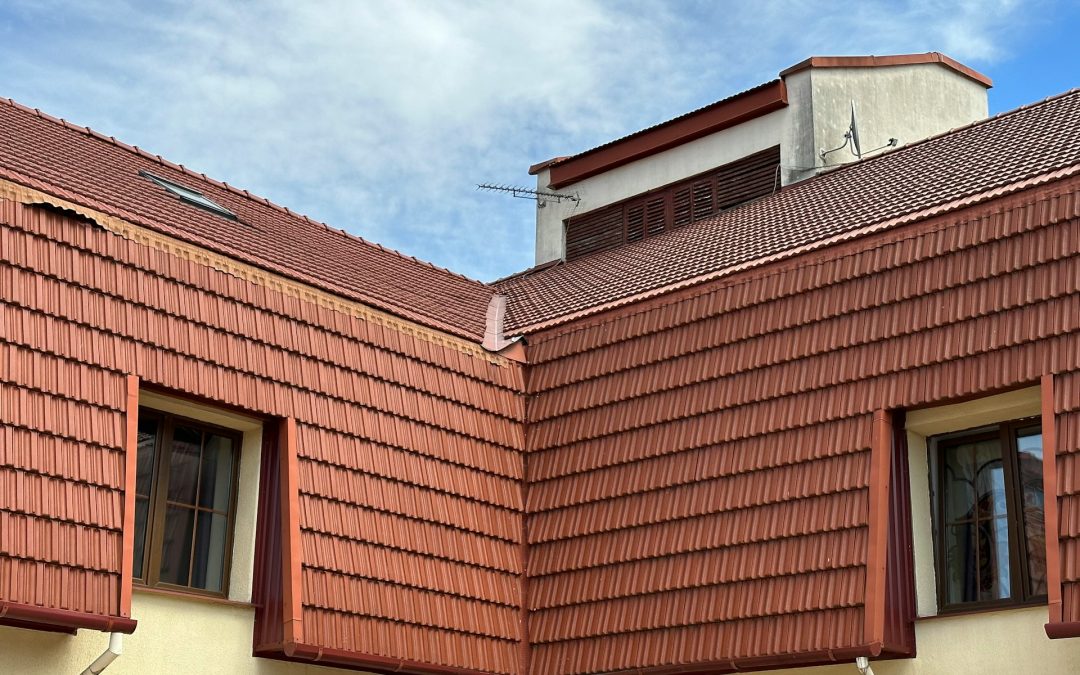TPO, or Thermoplastic Olefin, roofing has steadily gained popularity in both commercial and residential settings. This single-ply roofing membrane offers a mix of durability, ease of installation, and energy efficiency, making it an attractive choice for many property owners. If you’re new to the concept of TPO roofing or considering it for your next roofing project, it’s important to understand why it’s become such a popular option and how to properly care for it.
Once you’ve decided on TPO roofing, ensuring proper installation and maintenance is crucial. Professional roofing contractors can be a valuable resource here, as they bring the experience and expertise needed to get the job done right. With expert guidance, you can avoid common mistakes and ensure your TPO roof performs well over time.
What Is TPO Roofing?
TPO roofing is a type of membrane roofing made from a blend of polypropylene and ethylene-propylene rubber. This combination creates a durable and flexible roofing material. Some benefits of TPO roofing include:
- Energy Efficiency: TPO is naturally reflective, which helps in reducing energy costs by keeping buildings cooler. This quality makes it an excellent choice for a variety of climates.
- Durability: TPO roofs stand up well against UV radiation, ozone, and chemical exposure, which can be particularly beneficial for commercial buildings exposed to industrial pollutants.
- Cost-Effective: Compared to other roofing materials, TPO often offers a more affordable option for those seeking a balance between cost and long-term benefits.
Beyond these features, TPO has become a go-to choice for many roofing contractors due to its straightforward installation process and compatibility with various roofing systems. Its versatility works well for both flat and low-slope roofs, which are common in commercial architecture, yet it’s adaptable enough for residential needs too.
When considering TPO for your roofing project, it’s important to evaluate the specific needs of your building and climate. While TPO can deliver significant advantages, professional advice is key to maximizing its benefits. Experts can guide you through the choices available, such as the thickness and type of TPO that would best suit your property, making sure you get the performance and longevity you’re looking for.
Installation Tips for TPO Roofing
Getting the installation right is a big step in ensuring your TPO roof lasts for a long time. Preparation is key, and it all starts before a single sheet is laid down. Ensuring the roof deck is clean and dry is fundamental. Any debris left can cause issues later, so your roofing contractor will take the time to check every corner. Also, making sure the roof structure is capable of supporting the new material is an essential part of the pre-installation process.
During installation, there are some key steps to follow:
1. Laying Out the Membrane: The TPO membrane is typically rolled out and left to relax. This helps to eliminate any creases that could otherwise lead to defects.
2. Securing the Membrane: Mechanical fasteners or adhesives are used to secure the membrane in place. The choice between them often depends on the building’s structure and local climate conditions.
3. Heat-Welding the Seams: One of the tricks to TPO roofing is welding the seams together using hot air. This joins the sheets into a continuous waterproof layer.
4. Final Inspection: Ensuring all components are properly sealed is a must before declaring the project finished. Professionals will double-check the attachment of the edges and seams.
Understanding potential pitfalls means being aware of what can go wrong. Common issues generally revolve around inadequate seam seals or improper adhesion. Professional contractors have the experience needed to avoid these missteps, providing peace of mind.
Maintenance Tips for TPO Roofing
Regular maintenance of TPO roofing is crucial to catch and address issues early. Developing a simple but consistent inspection routine can make a world of difference. Routine checks should look for loose fasteners, damaged seams, and signs of ponding water. Spotting these problems early means they can be fixed before they turn into costly repairs.
Cleaning your TPO roof helps maintain its reflective properties. A light washing twice a year can keep your roof looking and performing its best. Using a mild soap and a soft brush or pressure washer can remove dirt and debris without damaging the membrane.
When repairs are needed, turn to professionals. Repairing seams or other major components requires specialized equipment and trained technicians to ensure the fix will hold. Skipping professional help for significant repairs can lead to bigger and more expensive issues down the line.
Signs You Need Professional Help with TPO Roofing
Even with regular maintenance, there are times when professional help is needed. Keep an eye out for:
- Standing Water: Shows drainage problems that might need modification.
- Visible Damage: Torn or missing sections of membrane should be repaired quickly.
- Interior Leaks: Water entering under the roof indicates a problem with the membrane or seams.
Engaging roofing contractors for regular maintenance inspections can prevent issues from escalating. They can use their expertise to identify obscure signs of degradation and ensure the TPO membrane remains efficient and sound.
Wrapping It Up: Keep Your TPO Roof in Top Shape
Proper installation and regular maintenance are your best defenses against roofing problems. With the right care, TPO roofing can stand the test of time and continue to protect your building in various weather conditions. Partnering with experienced professionals not only ensures the job is done right but also secures the long-term benefits of your roofing investment.
Choosing the right team for your roofing needs is an important decision. If you’re considering TPO roofing, trust the expertise of roofing contractors to ensure a flawless installation and upkeep of your system. Discover more about how Mike Huddleston Roofing Systems can help maintain your roof’s durability. Taking these steps today will help secure a lasting, resilient roof tomorrow.

